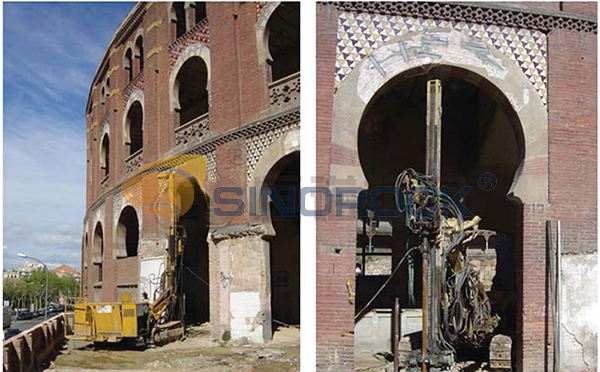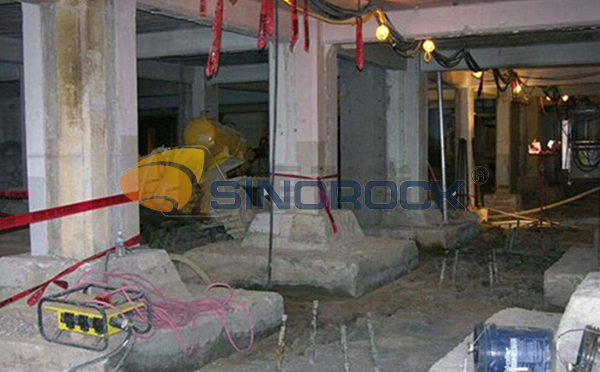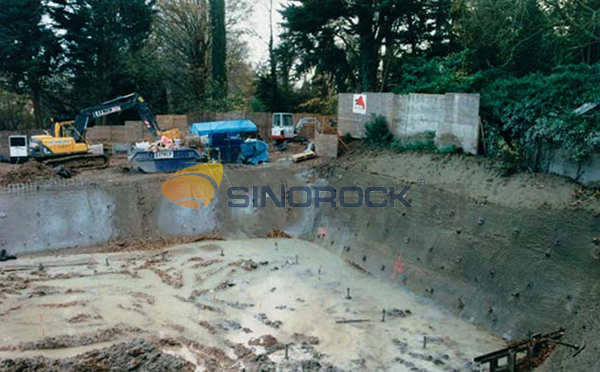Micropile Foundation: What is It? Applications | Types | Installation | Design
Time:2024-02-07From:sinorock View:
Introduction
As urbanization accelerates and land resources become increasingly scarce, the need for deeper foundations and underground construction within dense building complexes grows. Traditional methods like large diameter jet-grouted piles and soil-nailing walls often fall short in meeting the demands of such projects due to environmental constraints, limited space for excavation, and the absence of construction surfaces for heavy machinery. In response to these challenges, micropiles have emerged as a versatile, high-strength, and cost-effective solution offering adaptability to various environmental conditions.
What is Micropile?
Micropiles, also known as mini-piles, pin-piles, or root piles, represent a class of high-performance deep foundation elements characterized by their relatively small diameter, typically less than 300mm, and substantial length, often exceeding 30 meters. Despite their compact size, micropiles boast impressive load-bearing capacities, capable of sustaining working loads exceeding 200 tons. These slender piles are typically constructed using a combination of drilling and pressure grouting techniques, making them suitable for a wide array of applications, including structural support, foundation underpinning, soil stabilization, and load transfer. Micropiles are particularly effective in minimizing foundation settlement and excel in challenging soil conditions where traditional piling methods may falter.
Common Types of Micropiles
Micropiles can be categorized into four main types based on the construction process:
Type-A: Cement slurry gravity filling.
Type-B: Pressure grouting (0.5 – 1Mpa).
Type-C: Secondary grouting process involving higher pressure infusion after initial gravity filling.
Type-D: Repeat grouting for enhanced consolidation.
Design of Micropile Foundation and Details
Micropile foundations are designed based on two primary applications:
Design for direct load transfer
Micropiles resist axial or flexure loads through concrete compression and reinforcement, making them ideal for transferring loads to stable strata.
Design for soil reinforcement
Also known as a reticulated pile network, this application sees micropiles reinforcing soil, creating a stronger composite structure capable of withstanding external loads.
Design considerations include adopting a factor of safety of 2.0, adherence to recognized design standards such as BS 8081, and accounting for factors like compression capacity and buckling resistance in design calculations. Reinforcement options include single reinforcing bars or steel pipes, each offering distinct advantages in terms of strength and compatibility with concrete grout.
Advantages and Features of Micropiles
Micropiles offer a multitude of advantages, including:
- Penetrating various obstacles and adapting to diverse soil conditions.
- Providing structural support and enhancing soil stability.
- Compact size, lightweight, and cost-effectiveness.
- Ease of installation in confined spaces with minimal disruption.
- Capability to resist both compression and tension loads.
- Reducing soil stress and settlement, minimizing environmental impact.
- Suitability for complex geological conditions and diverse ground improvement projects.
- Versatility in retrofitting existing foundations and stabilizing slopes.
Micropile Installation
Micropile installation typically involves the following steps:
Preparation: Ensure all drilling and grouting equipment is in working order.
Drilling: Use specialized rigs to drill holes of required diameter and depth.
Hole Cleaning: Clear holes thoroughly to prepare for grouting.
Grouting: Inject grout under pressure to consolidate the surrounding soil and reinforce the pile.
Self-drilling Anchor Bolts Used as Micropiles
Self-drilling anchor bolts offer several advantages in micropile applications, including compression and tension resistance, grouting while drilling, high construction efficiency, and suitability for confined spaces. These versatile micropiles find widespread use in various building construction scenarios, including private residences, foundation restoration, new building reinforcement, and emergency stabilization.
.jpg)
Practical Applications of Self-drilling Mini-piles in Building Construction
Self-drilling micropiles are extensively utilized in diverse building construction scenarios, including:
Private residences: Minimizing disturbance during basement construction
.jpg)
The basement building makes full use of self-drilling mini-piles, which cause less disturbance to the original residence.
Foundation restoration: Suppressing soil deformation in ancient structures

Since the foundation of ancient buildings does not have a reinforced concrete support structure, the foundation base is prone to settlement. Self-drilling mini-piles can be used to suppress soil deformation.
Supporting existing structures and reinforcing new foundations

Emergency reinforcement during soil softening or collapse

For the softening and collapse of soil caused by strong rainfall in the rainy season, the self-drilling anchor bolt construction work surface is small and there is no need to excavate and remove the soil used for counter-pressure. After grouting, it can reinforce the geotechnical soil at the collapse site. The self-drilling anchor bolt can be flexibly combined with other support structures.
Flexibility in combining with other support structures for enhanced stability
Conclusion
Micropile foundations emerge as a versatile and efficient solution for addressing the challenges of modern construction projects, particularly in urban environments with limited space and challenging soil conditions. With their compact size, high load-bearing capacity, and ease of installation, micropiles offer a cost-effective and environmentally friendly alternative to traditional foundation methods.
Sinorock's self-drilling anchor system is particularly beneficial for building foundation engineering applications due to its simplicity, convenience, reliability, and high efficiency. With our expert knowledge and years of experience, we are able to enhance construction safety and efficiency, and ensure your project is built on a strong and stable foundation. If you are interested in our self-drilling anchor systems, please don't hesitate to contact us at sinorock@sinorockco.com.
latest news
-

- What Are the Applications of SDA Bolts in Hydropower Stations?
- Time:2025-08-21From:This Site
- Learn how self-drilling anchor bolts enhance slope stability, tunnel support, and dam reinforcement in complex geological conditions at hydropower stations. Optimize hydropower projects with efficient, cost-effective, and eco-friendly solutions.
- View details
-

- Slope Stabilization with SDA Bolts: Benefits & Applications
- Time:2025-08-19From:This Site
- Discover how self-drilling anchor bolts (SDA bolts) provide superior slope stabilization for highways, railways, and tunnels. Learn their key benefits, installation process, and real-world applications in loose or collapsible soils.
- View details
-

- How Self-Drilling Rock Bolts Enhance Tunnel Support in Fractured Rock?
- Time:2025-08-15From:This Site
- Discover how self-drilling rock bolts enhance tunnel support in fractured rock. Learn their benefits, installation steps, and real-world applications for safe, efficient tunneling.
- View details
-

- Sinorock 2025 Quality Month | Strengthening Quality Foundations, Empowering Product Excellence
- Time:2025-08-13From:This Site
- Sinorock’s 2025 Quality Month, themed “Strengthening Quality Foundations, Empowering Product Excellence,” successfully concluded, reinforcing our commitment to superior product quality.
- View details
-

- Sinorock Safety Month 2025 | Everyone Speaks Safety, Everyone Can Respond
- Time:2025-07-03From:This Site
- Sinorock Safety Month 2025, centered on the theme "Everyone Speaks Safety, Everyone Can Respond - Spot Workplace Hazards," has wrapped up successfully!
- View details
-

- Quality Control: the Vital Factor of A SDA Bolt Factory
- Time:2025-01-09From:This Site
- Sinorock’s comprehensive quality control system, from supplier management to outgoing inspections, ensuring the highest standards for self-drilling anchor bolts in construction.
- View details
-

- Sinorock Invites You to Explore Proven Self-Drilling Anchor Bolt Solutions at bauma 2025
- Time:2025-03-07From:This Site
- From April 7–13, 2025, explore Sinorock’s Self-drilling anchor bolt solution at Booth C2.513/4 in Hall C2 of the Messe München Exhibition Center (Munich, Germany).
- View details
-
.jpg)
- SINOROCK to Attend EXPOMINA PERÚ 2024 in Lima, Peru
- Time:2024-08-10From:This Site
- Sinorock to Attend EXPOMINA PERÚ 2024 in Lima, Peru
- View details
-
.jpg)
- SINOROCK to Participate in MINING AND METALS CENTRAL ASIA 2024
- Time:2024-08-08From:This Site
- SINOROCK to Participate in MINING AND METALS CENTRAL ASIA 2024
- View details
 Download
Download 


